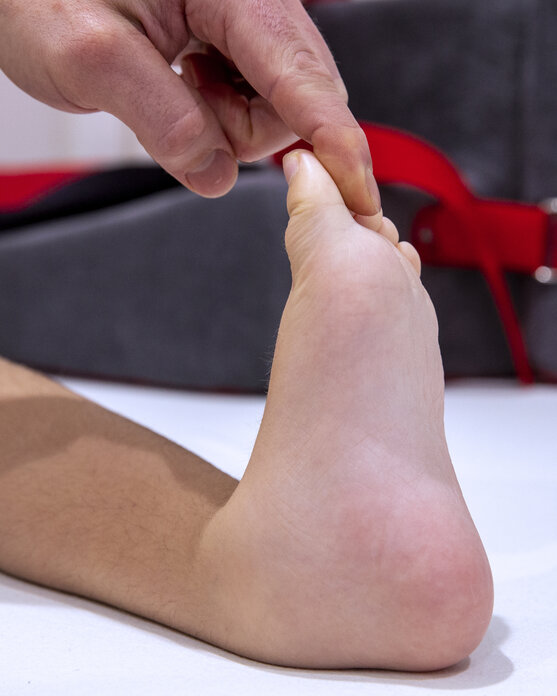Only the heel touches the floor
Calcaneal foot
For a calcaneal foot (lat. pes calcaneus), the foot of the affected child is bent upwards and the sole of the foot is directed outwards. Inadequate calf musculature means that only the heel touches the ground when walking. In severe cases, the back of the foot reaches up to the shin. With lighter shapes, the forefoot rests on the floor, but it can hardly take any load. It is not possible to unroll the foot. The gait pattern is heavily altered by the calcaneus foot, which forces the knees, hips and pelvis into an unnatural posture.
This is a relatively common foot deformity that is typically congenital. In addition to hereditary influence, a forced posture in the womb can also be responsible for the formation of the calcaneal foot. However, calcaneal foot usually corrects itself for a baby a few weeks after birth. Serious calcaneal foot requiring treatment is often found in children with a underlying neurological disease (e.g. spina bifida).
Causes of acquired calcaneal foot are nerve and tendon damage, which – even in adults – occur due to an accident or surgery.


Treatment options with orthoses
If physiotherapy and targeted exercises alone are not enough, the calcaneal foot can be treated very well with an orthosis. This conservative treatment option can effectively help to bring the calcaneal foot into the right position by means of targeted
measures. The lower leg orthosis ensures that the lower leg remains stable and no longer tilts forward. The adaptable foot part is designed to facilitate the unrolling of the foot. The hindfoot has a stable grip so that no effect is lost.
An orthosis is used to stabilize, relieve, immobilize, guide or correct limbs. This prevents or corrects incorrect postures and strains.
When choosing orthotic shoes, it is important for the combination of orthotic and shoe to be right for the purpose and for the desired effect of the treatment to be achieved. There are numerous models with different designs.

